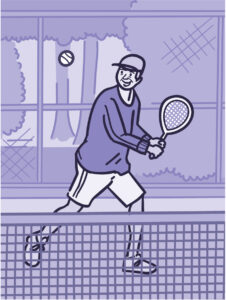Organ or tissue donation and autopsy
- Meaningfulness of acting to benefit another human being
- Common questions asked by families
- Sensitive approach
- Organ donation: Legislated in many states
- Unexplained or violent death
- Autopsy may be required by law
- Grief and Mourning
- Grief: A process
- Highly individualized
- Parental grief
- Along with experience the primary loss of their child, many secondary losses are felt, such as
- The loss of part of oneself
- Hopes and dreams for the child’s future
- The family unit
- Prior social and emotional community supports
- Often spousal support.
- Studies with bereaved parents have shown that grieving does not end with the severing of the bond with the deceased child but rather involves a continuing bond between the parent and the deceased child
- Parental resolution of grief is a process of integrating the dead child into daily life in which the pain of losing a child is never completely gone but lessens
- A child’s death can also challenge the marital relationship in several ways.
- Maternal and paternal reactions often differ
- Along with experience the primary loss of their child, many secondary losses are felt, such as
- Sibling grief
- Children grieve differently than adults
- Their understanding and reactions to death depend on their age and developmental level.
- Children grieve for a longer duration, revisiting their grief as they grow and develop new understandings of death.
- They do not grieve 100% of the time.
- They grieve in spurts and can be emotional and sad in one instance and then, just as quickly, off and playing.
- Children express their grief through play and behavior.
- Children can be exquisitely attuned to their parents’ grief and will try to protect them by not asking questions or by trying not to upset them.
- This can set the stage for the sibling to try to become the “perfect child.”
- Children exhibit many of the grief reactions of adults, including physical sensations and illnesses, anger, guilt, sadness, loneliness, withdrawal, acting out, sleep disturbances, isolation, and search for meaning.
- Nurses should be attentive for signs that siblings are struggling with their grief and provide guidance to parents when possible.
- Children grieve differently than adults
- Parental grief
- Supporting grieving families
- General
- Stay with the family; sit quietly if they prefer not to talk; cry with them if desired.
- Accept the family’s grief reactions; avoid judgmental statements (e.g., “You should be feeling better by now”).
- Avoid offering rationalizations for the child’s death (e.g., “Your child isn’t suffering anymore”).
- Avoid artificial consolation (e.g., “I know how you feel,” or “You are still young enough to have another baby”).
- Deal openly with feelings such as guilt, anger, and loss of self-esteem.
- Focus on feelings by using a feeling word in the statement (e.g., “You’re still feeling all the pain of losing a child”).
- Refer the family to an appropriate self-help group or for professional help if needed.
- At the time of death
- Reassure the family that everything possible is being done for the child if they want lifesaving interventions.
- Do everything possible to ensure the child’s comfort, especially relieving pain.
- Provide the child and family with the opportunity to review special experiences or memories in their lives.
- Express personal feelings of loss or frustration (e.g., “We will miss him so much,” “We tried everything; we feel so sorry that we couldn’t save her”).
- Provide information that the family requests and be honest.
- Respect the emotional needs of family members, such as siblings, who may need brief respites from the dying child.
- Make every effort to arrange for family members, especially the parents, to be with the child now of death if they want to be present.
- Allow the family to stay with the dead child for as long as they wish and to rock, hold, or bathe the child.
- Provide practical help when possible, such as collecting the child’s belongings.
- Arrange for spiritual support based on the family’s religious beliefs; pray with the family if no one else can stay with them.
- Post Death
- Attend the funeral or visitation if there was a special closeness with the family.
- Initiate and maintain contact (e.g., sending cards, telephoning, inviting them back to the unit, making a home visit).
- Refer to the dead child by name; discuss shared memories with the family.
- Discourage the use of drugs and alcohol as a method of escaping grief.
- Encourage all family members to communicate their feelings rather than remaining silent to avoid upsetting another member.
- Emphasize that grieving is a painful process that often takes years to resolve.
- General




